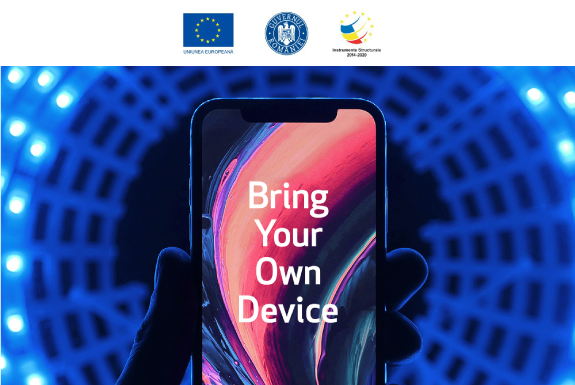
Mobile Device Management Opens New Roads to the BYOD World
Employees, collaborators, as well as managers of medium and large companies, are becoming more and more interested in the BYOD (Bring Your Own Device) approach. This openness is allowing team members to use their own smartphones or notebooks, bringing obvious advantages to the table: it significantly reduces the equipment investment and can improve productivity. BYOD is interesting, especially in a context in which many organizations are steering towards concepts like remote work, and most devices suffer from planned obsolescence. But BYOD’s flexibility has major risks of security and confidentiality.
Our solution called FORTYPE, by its module MDM (Mobile Device Management) solves all these risks through a dynamic approach. The module MDM includes all the critical features identified by clients and experts, among which are hardware inventory, OS configuration management, mobile app deployment, updating and removal, mobile app configuration and policy management, remote view and control for troubleshooting, and mobile content management.
Our team wanted to take things further and learn from real users and MDM administrators, which could take our solution to the next level, using the Design Thinking based approach. Design Thinking relies mostly on methods and processes that designers use, but they apply to a large range of fields, including architecture, engineering and business. Design Thinking is highly user-centric, trying to understand people’s needs and come up with effective solutions to meet those needs.
Following the Design Thinking approach, which is focused on end-users as well as MDM solutions administrators, we came up with three practical and innovative approaches for the FORTYPE solution:
- Repeated Checks for Security Policy Settings
Many security policies are treated as a “fire-and-forget” solution — only to be promptly disabled on the device. FORTYPE by MDM module will perform a security policy check at a set interval to prevent such tampering.
- Turning Security Configuration Management into a One-Click Process
Instead of creating a custom code for every new security policy, FORTYPE by MDM module allows users to activate and deactivate custom security configurations with the click of a button. Custom, role-based blueprints using specific combinations of security settings can also be created to make onboarding new devices even faster. This helps ensure that every device is protected.
- Providing a Dashboard Showing Each Device’s Security Status
The MDM’s dashboard view allows admins to check the current security status of every device registered to the organization at a glance. In the dashboard view, admins can check each device’s security status (online and secure, offline, online with an alert, and missing), total security event remediation and the active blueprint assigned to specific devices.
The MDM solution is not, of course, the only technology by which organizations will have to ensure a safe and effective implementation of BYOD. It’s important that administrators explore safe network access solutions, device authentication solutions, and perhaps network infrastructure updates. But for most businesses, MDM is the most logical step to start the BYOD transition, and the user-centric approach offered by MDM module can help them make this process easier.
FORTYPE solution is being developed by Trencadis Corp within the project TALOS – Secure Mobile Inter-organizational Communication.
This project is co-financed with funding from the European Regional Development Fund – Priority Axis 2 – “Information and Communication Technology (ICT) fit a competitive digital economy”, through the Operational Competitiveness Program 2014-2020. The content of this material does not necessarily represent an official position of the European Union or the Government of Romania.














